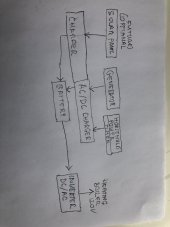There are a few limits that you want to consider.
1) What charge current are your batteries rated for? If you have 4 batteries that are each rated for up to 100A charge current, then the max charge current for the batteries is 400A. However, if you only have 1 battery it would be 100A.
Since you illuded to wanting to grow the system over time this presents a little bit of a problem because you don't want a 400A charger on a single battery thinking you will add batteries later.
2) What is the 'available' power from the generator? As
@Skypower mentioned you have to start with the 'continuous power rating (1800W), then you need to subtract out any power the boiler and other loads will be using. The remainder can be put toward charging the battery.
3) What is your budget? Unfortunately, AC-DC chargers can be surprisingly expensive compared to other equipment we discuss here on the channel. The good news though is that you can parallel chargers. This means that you could start small and add additional chargers as the budget permits. This also allows you to add additional charging capacity as you add additional batteries. (See point 1 above).
I normally tell people to stay away from power supplies as chargers because a power supply will hold the battery at the charge voltage permanently. This can age the battery rapidly. However, in the scenario described, the power supply would not be on permanently so this would not be an issue. Consequently, power supplies could be used for your needs and may be a cheaper solution. (If you go this route, make sure the power supplies can be paralleled).
Do you have an inverter? what type is it?
 powerequipment.honda.ca
powerequipment.honda.ca



